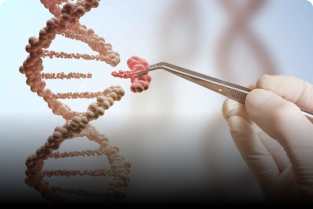The fusion of genetic engineering and nanotechnology holds the potential to revolutionize human enhancement. While these fields have traditionally been explored separately, their combination could unlock unprecedented improvements in physical, cognitive, and even lifespan-related attributes. But how far can we push the boundaries of human enhancement using these technologies?
Understanding Genetic Engineering and Nanotechnology
Genetic Engineering
Genetic engineering involves modifying an organism’s DNA to introduce desirable traits or eliminate harmful ones. Technologies like CRISPR-Cas9 allow precise editing of genetic material, potentially correcting genetic disorders, improving immune function, and even enhancing intelligence.
Nanotechnology
Nanotechnology operates at the molecular level, designing materials and devices that interact with biological systems. In medicine, nanoparticles can deliver drugs directly to target cells, repair damaged tissues, or enhance bodily functions by interacting with biological molecules.
Potential Enhancements in Adult Humans
1. Physical Enhancements
- Increased Strength & Endurance: Genetic modifications could enhance muscle growth and oxygen efficiency, while nanobots could optimize energy production and repair tissue damage rapidly.
- Enhanced Healing & Regeneration: Stem cell activation through genetic engineering combined with nanotechnology-driven tissue repair could drastically reduce recovery time from injuries.
- Disease Resistance: By editing immune system genes and using nanosensors to detect pathogens, we could significantly reduce susceptibility to diseases like cancer and infections.
2. Cognitive Enhancements
- Improved Memory & Learning: Genetic modifications targeting neural pathways could enhance memory retention and processing speed. Nanotechnology could further support cognitive function by improving neural connectivity and preventing degenerative diseases like Alzheimer’s.
- Enhanced Brain-Computer Interface (BCI): Nanotech-based neural implants could enable seamless interaction with digital devices, augmenting human intelligence and information processing capabilities.
3. Longevity and Anti-Aging
- Slowing Aging Processes: Genetic alterations to regulate telomeres and cell replication, combined with nanotech-driven cellular repair, could extend human lifespan.
- Elimination of Toxins: Nanoparticles could act as internal detoxifiers, removing harmful substances from the body before they cause long-term damage.
Ethical and Practical Considerations
While the possibilities are vast, several challenges and ethical dilemmas must be addressed:
- Accessibility & Inequality: Will these enhancements be available to all, or only to the wealthy?
- Unintended Consequences: Genetic modifications may have unpredictable side effects, and long-term impacts of nanotechnology are still largely unknown.
- Regulation & Control: Governments and scientific communities must establish ethical guidelines to prevent misuse.
Conclusion
Combining genetic engineering and nanotechnology presents a transformative opportunity to enhance adult humans beyond natural limits. While significant hurdles remain, the potential for increased strength, intelligence, and longevity is undeniable. As science advances, ethical considerations will play a crucial role in shaping how these technologies are applied to humanity’s future.

